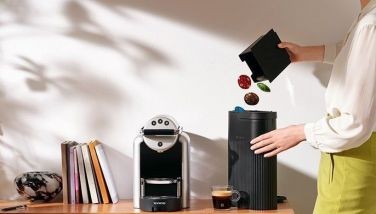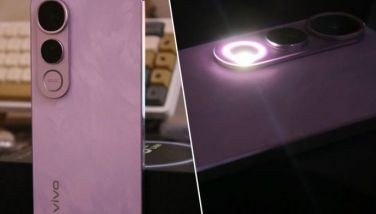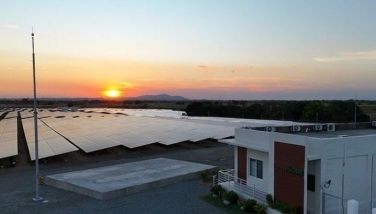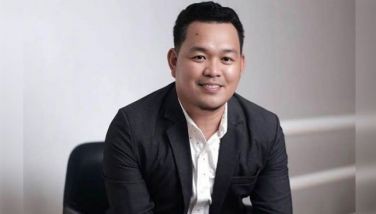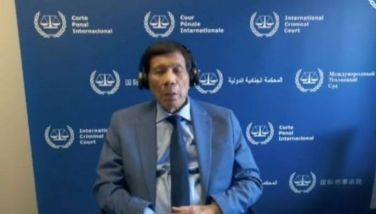Magtanim hindi biro
Rice, to Filipinos, is as basic and essential as air and water. It is thus a high crime that we cannot feed our own people, and it is a national shame that we rely on farmers in Vietnam and Thailand and India to feed our people – at exorbitant cost. That a worker who earns a daily wage of P610 must pay P50 or more for a kilo of rice indicates the colossal failure of the government’s agricultural policies. Implementing a maximum SRP of P58 per kilo for imported rice just proves that the reduced tariff didn’t at all benefit consumers, as those economic bright boys claimed.
Bureaucrats talk endlessly about helping our farmers, but in reality, our farmers hardly benefit from all their programs with tongue-twisting acronyms. The reality of farming is on the ground, out in the fields, and that is where our officials – from the Cabinet secretary down to all his usecs and asecs – must go, talk to and – most importantly – listen to our farmers.
I get my rice from a farmers’ association in Tarlac, now sold under the brand name Hiraya, available in Jasmine, Dinorado, Angelica and Sinandomeng varieties at selected Robinsons and Metro supermarkets (yes, this is an unabashed plug). It’s not cheap – it’s not P29 a kilo – but it’s affordable and of good quality, and I am sure it’s a product of the hard work of Filipino farmers. As our “Food for Thought” columnist advocates, I decided to try to get to know the farmers who plant and harvest these precious grains.
Hiraya rice is the product of 150 farmer-families from four barangays in Tarlac (Estrada, San Carlos and Sta. Rita in Capas and Buenavista in Tarlac City) and two in Nueva Ecija (Maybubon and Bulakid in Guimba) cultivating around 500 hectares of riceland in Central Luzon. The land has been farmed continuously for generations and because of this, the soil is no longer rich in nutrients. Unfortunately, our farmers cannot afford to let the land “rest” by not planting, following the biblical principle of a “sabbath of the land” when, every seventh year, there should be no planting or harvesting (Leviticus 25:3-4).
Thus the reliance on chemical fertilizers, mainly urea, which is expensive – about 30 percent of total production cost. At a low average of P1,500 per sack and a minimum of 10 sacks needed per hectare, that’s at least P15,000 upfront expense per hectare.
There is an integrated mill in La Paz, Tarlac where the palay is dried, milled and packaged. They have taken to using ipa (rice husk) instead of kerosene as fuel for the drying process, and the burnt residue, called biochar, is mixed with other waste products – say from poultry – to become biofertilizers, a lot less costly and much better for the soil. But so far, this is still done on a very limited scale. Perhaps the Bio N fertilizer coming out of UP Los Baños can be a viable alternative for them. Composed mainly of microorganisms extracted from the lowly talahib grass, Bio N is touted to be a “safe, effective and low cost” fertilizer for rice, corn and vegetables, needing only five 200-gram packs for a hectare of riceland.
The farmers do two croppings a year. Good irrigation (kudos to the “new and improved” National Irrigation Authority) and better seeds (some hybrid rather than purely in-breed) have improved the yield – from about 4.5 tons per hectare some five years ago, they now average six tons, and even up to eight tons, per hectare. Social investors, who extend interest-free loans when needed, buy their harvest at fair prices, P22 per kilo farmgate last harvest, enabling farmers’ income to increase from just P35,000 per hectare to P60,000 to P80,000 per hectare.
When I was a kid, my mother used to say we must always eat every single grain of rice, not because of the starving children in Africa (which is the common admonition) but because of the hard work the farmer put in for that one butil of rice. “Magtanim hindi biro,” as the song goes.
* * *
I learned about Hiraya rice from a friend I met at church many years ago, a rebel turned missionary when his life was, literally and figuratively, turned around after he met Christ. The rice crisis in 2018 was a crucial point for Kaka – who we used to call PD, for political detainee, although at the start we thought PD was actually his name! A former professor of his at the Asian Institute of Management, a proponent of integrated agribusiness, introduced him to a farming community in Tarlac, in Barangay Sta. Rita which, incidentally, was where Commander Dante first met with farmers back in the 1970s. The descendants of some of those farmers are still working the land, producing the Dinorado and Sinandomeng that my family and I so enjoy.
Kaka – kapatid at kasama – puts his missionary commitment and his heart for the common folk into helping the farmers technically, financially and spiritually, following the biblical commandments to feed the hungry (Matthew 14:6, 25:35-37; Romans 12:20; James 2:15-16).
I asked if he was worried about being red-tagged; after all, working as he does with farmers in the countryside, he might be accused of “recruiting” them for some sinister purposes. He laughed: “Nadaanan ko na yan, wala na yan sa akin.”
These days, his motivation is different: as it says in Colossians 3:23-24, “Whatever you do, work at it with all your heart, as working for the Lord and not for human masters… It is the Lord Christ you are serving.”
- Latest
- Trending











